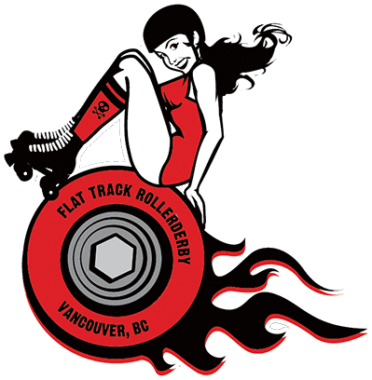About Us
Since its inception, the Terminal City Rollergirls have set out to make our mark on Vancouver. Our mission is threefold:
- To showcase exhilarating live sporting events featuring strong female athletes;
- To improve each member’s athletic ability, self-discipline and character;
- To work together to improve our communities as a whole.
Since 2006, the Terminal City Rollergirls league has grown exponentially! What started out as a meeting over nachos with a handful of women has spawned a league that is now over 10 years strong, and continues to grow and evolve.
We have a house team that plays locally in our annual season, a WFTDA-ranked travel team that represents Vancouver in competitions throughout North America and worldwide, dozens of rookies participating in our training program every year, an outstanding crew of skating and non-skating officials, an indispensable group of support volunteers, and the best fans in the world. Terminal City Rollergirls has become a major force in the world of roller derby, and a prominent part of the Vancouver community.
TCRG is a 100% player-owned and operated, and each of our members contributes to the productivity of this non-profit organization. The league is made up of a diverse group of women and men, from nurses to construction workers, graphic designers and teachers to stay-at-home moms, PhD students, and aspiring rock stars.
Each member brings their unique skills and perspectives to the table, and this allows our league to operate as a dynamic and successful organization. Every TCRG event has been conceived, orchestrated, and run exclusively by our members as a labour of love for each other, our community, and our sport!
What is Roller Derby?
Modern Flat Track Roller Derby, while inspired by the spectacle of the old, televised banked track derby, is a legitimate contact sport with clear rules and sophisticated strategy. The hits and bruises are real! That said, there are rules against dangerous and unsportswomanlike behavior, such as punching or tripping.
The Rules
While the jammer is trying hard to maneuver — or ram! — her way through the pack, the blockers have two objectives: help their own jammer get out by obstructing the other team, and prevent the opposing jammer from getting through. Since both jammers may be engaged in the pack at the same time, it’s one of the few sports where offensive and defensive gameplay happens simultaneously!
Check out this video from the Women’s Flat Track Derby Association for an excellent overview of game basics.
Penalties
Examples of penalties include:
- initiating contact with the lower arms (from the elbows down) or lower legs
- landing a hit on another skater’s lower legs, head, or square in the back
- going out-of-bounds and re-entering the track ahead of skaters that were in front (“cutting”)
- tripping — intentionally or unintentionally!
- hitting a player while skating counter gameplay direction (clockwise)
- for blockers: initiating contact when too far away from the rest of the pack (“out of play” penalty)
